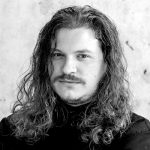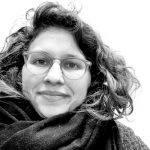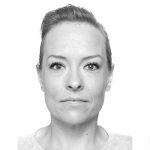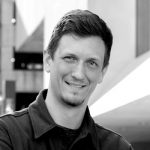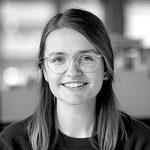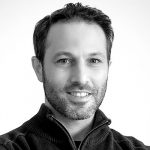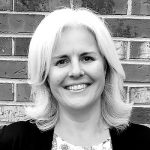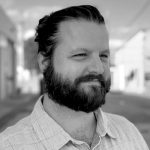Agenda
TECH+ features a full day of industry-changing ideas, projects, tools, and demos from technology leaders.
Earn 6 AIA LU.
Sessions marked Tracks run concurrently in 4 tracks with 4 one hour sessions for you to choose from.
Click on the tabs to view the agenda for each track.
8:00 – 9:30 AM
9:30 – 9:35 AM
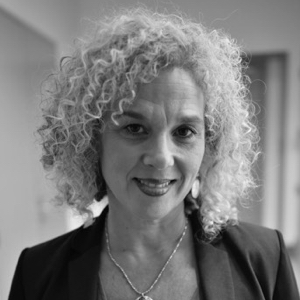
Dionne Darling
VP of Brand Partnerships
Dionne Darling has been with The A|N Media Group for over five years. As A|N’s Associate Publisher, she manages A|N’s Texas headquarters and handles accounts in the West, Southwest and Chicago territories.
Dionne has over 25 years of direct B2B sales and business development experience. Dionne holds an Associate Degree from El Centro Junior College at Dallas, Texas.
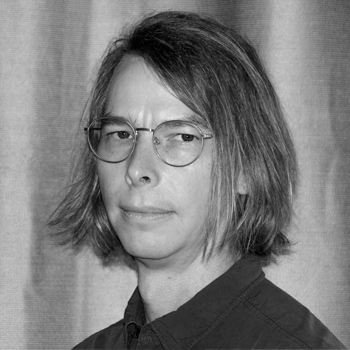
Aaron Seward
Editor-in-Chief
Aaron Seward is Editor-in-Chief of The Architect’s Newspaper. Seward is an award-winning editor whose career has centered on interpreting architecture for the profession and the general public. He was editor of Texas Architect magazine for six years and prior to that held several positions at AN, including executive editor. In addition to those publications, Seward’s writing on architecture, culture, and the built environment has appeared in Architect, Curbed, Domus, Metropolis, and other publications. He has a BA in Literature, Writing and the Arts from The New School for Social Research.
9:35 – 10:15 AM
The way we live, work, and play is very different today than it was just a few decades ago, thanks in large part to a network of connectivity that now encompasses most people on the planet. In a similar way, today we are at the beginning of a new technological revolution: the Internet is entering the physical space – the traditional domain of architecture and design – becoming an “Internet of Things” or IoT. As such, it is opening the door to a variety of applications that – in a similar way to what happened with the first wave of the Internet – can encompass many domains: from production to citizen participation, from energy to mobility to public hygiene, all of which requiring new insights due to the changes brought forth by the ongoing COVID-19 pandemic. The contribution from Prof. Carlo Ratti will address these issues from a critical point of view through projects by the Senseable City Laboratory, a research initiative at the Massachusetts Institute of Technology, and the design office Carlo Ratti Associati.
Carlo Ratti
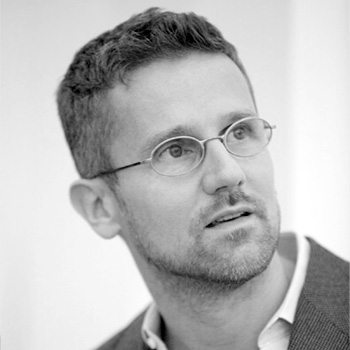
Carlo Ratti
An architect and engineer by training, Professor Carlo Ratti teaches at the Massachusetts Institute of Technology (MIT), where he directs the Senseable City Lab, and is a founding part- ner of the international design and innovation office Carlo Ratti Associati. He graduated from the Politecnico di Torino and the École Nationale des Ponts et Chaussées in Paris, and later earned his MPhil and PhD at the University of Cambridge, UK.
A leading voice in the debate on new technologies’ impact on urban life and design, Car- lo has co-authored over 500 publications, including “The City of Tomorrow” (Yale University Press, with Matthew Claudel), and holds several technical patents. His articles and interviews have appeared on international media including The New York Times, The Wall Street Journal, The Washington Post, Financial Times, Scientific American, BBC, Project Syn- dicate, Corriere della Sera, Il Sole 24 Ore, Domus. His work has been exhibited worldwide at venues such as the Venice Biennale, the Design Museum Barcelona, the Science Museum in London, MAXXI in Rome, and MoMA in New York City.
Carlo has been featured in Esquire Magazine’s ‘Best & Brightest’ list and in Thames & Hud- son’s selection of ‘60 innovators’ shaping our creative future. Blueprint Magazine included him as one of the ‘25 People Who Will Change the World of Design’, Forbes listed him as one of the ‘Names You Need To Know’ and Fast Company named him as one of the ’50 Most Influen-tial Designers in America’. He was also featured in Wired Magazine’s ‘Smart List: 50 people who will change the world’. Three of his projects – the Digital Water Pavilion, the Copenhagen Wheel and Scribit – have been included by TIME Magazine in the list of the ‘Best Inventions of the Year’.
Carlo has been a presenter at TED (in 2011 and 2015), program director at the Strelka Insti- tute for Media, Architecture and Design in Moscow, curator of the BMW Guggenheim Pavilion in Berlin, and was named Inaugural Innovator in Residence by the Queensland Government. He was the curator of the Future Food District pavilion for the 2015 World Expo in Milan and chief curator of the “”Eyes of the City”” section at the 2019 UABB Biennale of Architecture and Urbanism of Shenzhen. He is currently serving as co- chair of the World Economic Forum’s Global Future Council on Cities and Urbanization.

Aaron Seward
Editor-in-Chief
Aaron Seward is Editor-in-Chief of The Architect’s Newspaper. Seward is an award-winning editor whose career has centered on interpreting architecture for the profession and the general public. He was editor of Texas Architect magazine for six years and prior to that held several positions at AN, including executive editor. In addition to those publications, Seward’s writing on architecture, culture, and the built environment has appeared in Architect, Curbed, Domus, Metropolis, and other publications. He has a BA in Literature, Writing and the Arts from The New School for Social Research.
10:15 – 10:30 AM
10:30 – 11:30 AM
Track Sessions #1
Architecture has begun a journey into the Metaverse. The building of virtual social environments drives the 150 Billion dollar gaming industry, but shouldn’t architects be a part of this major development in social space? Documenting his journey in AN, Ryan Scavnicky has been traversing these environments (some designed by high-profile architecture firms) and is here to tell us what it is like, and to make some predictions for potential futures. It starts with how architecture needs to be better involved in the digital social platforms already in common use today, from TikTok, to Twitch, and everything in between. In the end we will ask: What is the future of Architectural Content?
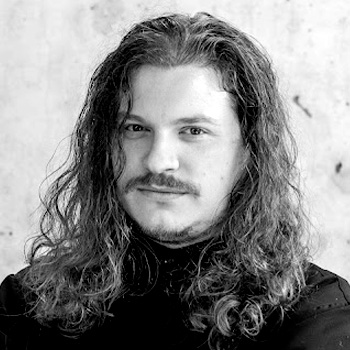
Ryan Scavnicky
Founder
Ryan Scavnicky is the founder of Extra Office, a design studio investigating architecture culture through memes and media production to seek new agencies for critical practice. This has led to a recent interest in the overlaps between architecture theory and the cultural spaces of video games — the discussions of which can be found on TikTok, Twitch, and YouTube. Ryan teaches architecture studio and media theory at Kent State University. His work is published in Architect’s Newspaper, PLAT, ArchDaily, SURFACE Mag, Bartlebooth, Kotaku, UCLA Pool, and Hyperallergic. In addition, he spent 6 years in practice with international offices including GBBN architects in Beijing, Coop-Himmelblau in Vienna, and studioTECHNE in Cleveland. He studied at L’Ecole Speciale d’Architecture in Paris and DAAP in Cincinnati for his Masters of Architecture, and received his Masters in Design Theory and Pedagogy with distinction from SCI-Arc in Los Angeles. Recently, Ryan served as the Visiting Teaching Fellow at the School of Architecture founded by Frank Lloyd Wright as the Taliesin Fellowship in 1932. He has previously held appointments at the University of Cincinnati and SCI-Arc. Ryan lives in Akron with his partner Kristen Mimms Scavnicky and their two cats, Mr. Smee and Tink.
Research and pedagogy that focuses on radical low-carbon and health building materials is critically needed to address global climatic, societal, and economic urgencies. Specifically, earth- and bio-based materials have been receiving increasing attention due to their availability, ease of application, and sustainable features. However, earth- and bio-based materials are yet to be integrated into mainstream projects and building technology curricula worldwide, and raw (non-stabilized) mixtures require further research to increase durability, construction pace, and applicable usages. In this presentation, Prof. Lola Ben-Alon will share her ongoing work at the Natural Materials Lab at Columbia GSAPP, where she catalyzes ecological knowledge—both traditional and futuristic—on earth- and bio-based materials throughout their design, construction, fabrication, and policy arenas.
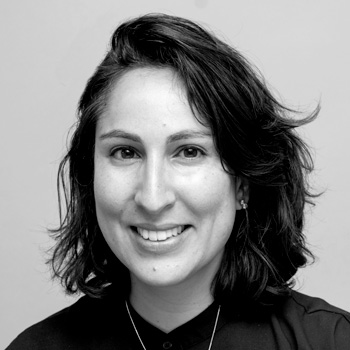
Lola Ben-Alon
Director
Lola Ben-Alon is an Assistant Professor at the Graduate School of Architecture at Columbia University, where she also serves as Director of the Building Technology sequence. She is focused on research in building materials and energy performance. She brings expertise in natural and bio-based materials, Life Cycle Analysis (LCA), and exhibitions.
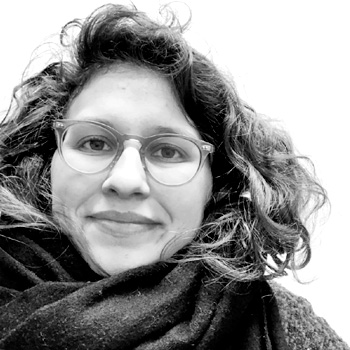
Paige Davidson
Associate Newsletter Editor
Paige Davidson is the Associate Newsletter Editor and a contributing writer at The Architect’s Newspaper. Davidson received her Bachelor of Arts in Architecture from Hobart & William Smith Colleges, where she was awarded the Eric Cohler Internship and Travel Award and studied Scandinavian Design in Denmark and Sweden. After graduating, she pursued her Master of Design in Interior Architecture with a focus on adaptive reuse design from the Rhode Island School of Design (RISD). While at RISD she wrote her thesis, Amending the Idle: An Analysis of Urban Idle Spaces + Third Places. Davidson has experience working at both architecture and interior design firms.
Cities like New York must rapidly deploy deep energy retrofits throughout their existing building stock in order to achieve net-zero emissions by 2050. However, the AEC industry currently lacks economically viable solutions to meet this urgent need. The problem is further complicated because most retrofit projects must be implemented with tenants remaining in place during construction. This presentation will introduce a new approach to deep energy retrofits called Hydronic Shell, in which the new HVAC and facade systems are integrated into prefab modular panels that can be installed completely from the exterior of the building, reducing costs and minimizing disruption to the tenants inside. The talk will include a technical overview of the Hydronic Shell system, as well as a discussion of retrofit economics and how an industrialized approach to retrofits can dramatically reduce project costs.
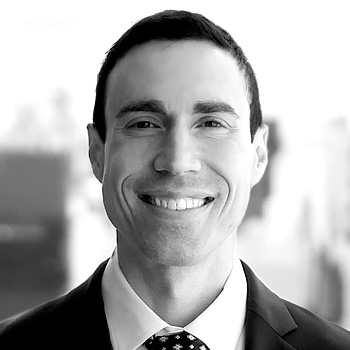
David Goldstein
Founder
David J. Goldstein is a mechanical engineer based in New York City with 15+ years of experience designing HVAC systems in residential and commercial buildings. He is a licensed Professional Engineer in New York State as well as a LEED AP and WELL AP.
David is the CEO of Hydronic Shell Technologies, which he founded in 2020 with the mission of transforming buildings for a net-zero future. HST is developing a modular central HVAC system called Hydronic Shell that is integrated within facade panels that form an insulated shell around the building. The system leverages the principles of industrialized construction to deliver deep energy retrofits that are cost-effective and minimally invasive, while deployable at the scale necessary for cities like New York to achieve net-zero by 2050.
Digital twins are quickly proving to be a key strategic accelerator for digital transformation, unlocking the value created by the Internet of Things (IoT), artificial intelligence (AI), and analytics.
Join Anna Liza Montenegro of Microsol Resources as she moderates this two-part panel discussion. What exactly is the buzz about? What is a digital twin? What elements define it? When can and should we apply this technology? What makes it so powerful? And how will its adoption influence our design process and, ultimately, our buildings and cities?
In Part 1: Introductions to Digital Twin Technology you will Learn how developing a digital twin strategy can help you harness the convergence of the digital and physical worlds with industry leaders who are driving this transformation.
The discussion continues after the break and focuses on the challenges of implementing, managing, and measuring Digital Twin solutions.
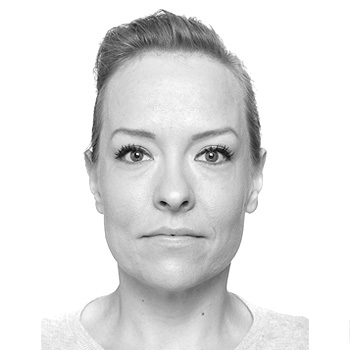
Salla Eckhardt
Director, Digital Building Lifecycle & Innovation
Center of Innovation—Microsoft
Salla identifies as a passionate and inspiring innovation leader and a change agent for the global construction and real estate industry. She is recognized as an industry game changer, and one of the most innovative and forward-thinking people in the sector. Her focus is on successful business transformation of the AECO industry with four key components: engaging stakeholders in full digital building lifecycle, communicating shared objectives in smart buildings, driving digital transformation in smart cities, and determining coherent ways to maximize productivity and innovation with intelligent cloud & intelligent edge.
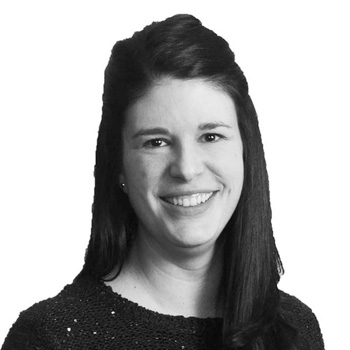
Sarah Dreger
Director, Strategic Lead of Digital Transformation
Center of Innovation—Microsoft
Sarah is seasoned leader and expert in project management, dev management, BIM modeling and coordination, technical writing, and customization (lisp, macros, script, VB.net, C#, SQL, HTML, CSS, JavaScript and am learning PowerShell). She has assumed many roles throughout her career; programmer, technical writer, author, modeler, animator, researcher, advisor, marketer, manager, and strategist. Before joining Microsoft, she was the global leader of Stantec’s Digital Practice
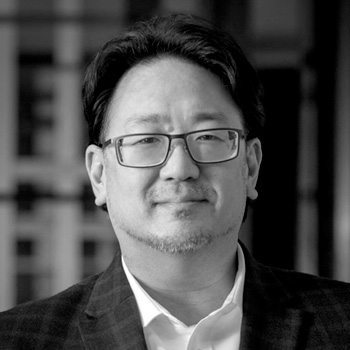
Bill Kwon
Vice President of Information Technology and Digital Transformation
Bill spearheads digital transformation and technology globally at CallisonRTKL.
With nearly 20 years of experience in the architecture and design industry, his diverse background and
human-centred approach allows him to help design teams to embrace technology and data, enhance
customer journeys, sharpen strategic positioning, and eliminate inefficiency.
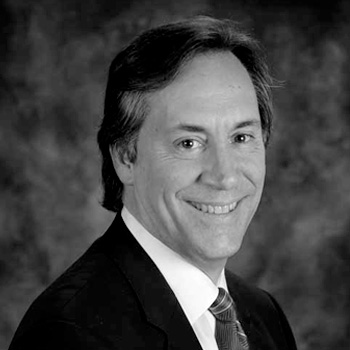
Steven Jones
Senior Director, Industry Insights Research
Steven is a globally recognized expert in how emerging economic, practice, and technology trends are shaping the future of the design and construction industry. He speaks at conferences globally, authors the SmartMarket Report series on key industry trends, and hosts the ENR FutureTech events.
Before Dodge, Steven was Vice President of Primavera Systems (now part of Oracle), and prior to that, spent 19 years in creative and management roles with top design firms, most recently as a Principal and Board of Directors member with Burt Hill, one of the largest A/E firms in the US (now merged with Stantec). Steven holds an MBA from Wharton and a BA from The Johns Hopkins University.
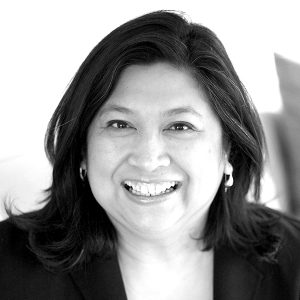
Anna Liza Montenegro
Director of Marketing
Anna Liza Montenegro develops design technology conferences and training for architecture, engineering and construction (AEC) professionals as a forum to exchange innovative strategies, best practices, and facilitate discussions into the technology trends driving significant change in building design and construction. As Director of Marketing, these events are offered to AEC professionals by Microsol Resources, a value-added reseller of Autodesk, Bluebeam, CADLearning, Enscape, Rhino, V-Ray, and their various technology partnerships. When not marketing, she loves spending time with her kids, traveling, and summers in Maine.
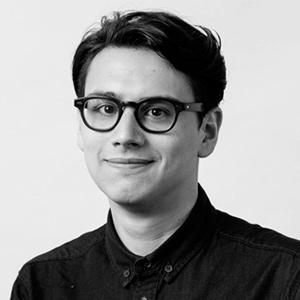
Samuel Medina
Contributing Editor
Samuel Medina is a contributing editor of The Architect’s Newspaper. He was previously the executive editor of The Architect’s Newspaper, and before that the editorial director of Metropolis magazine. As a writer, his work has been published in art and architecture magazines such as Artforum, the Art Newspaper, and Domus, among others. He recently edited a monograph on the architect Eric Owen Moss, due out this year.
11:30 – 11:45 PM
11:45 – 12:00 PM
10:30 – 11:30 AM
Track Sessions #2
1:00 – 1:15 PM
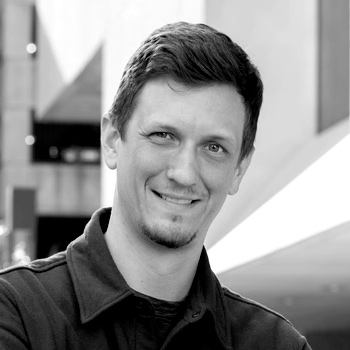
Patrick Chopson
Co-Founder
Focusing on the crossover between architecture and technology, Patrick Chopson leads cove.tool, a web-based design software for buildings using machine learning and automation to drive decision making. As Co-Founder, he oversees product development and research. A graduate of Georgia Tech with a Master’s in High Performance Buildings, he is a licensed architect with over 17 years of experience in architecture, research, and mechanical engineering firms. Prior to cove.tool, he co-founded a successful building performance consulting firm Pattern r+d. He is featured in multiple publications include Architect Magazine, Tech Crunch, Site Selection, ArchDaily, and more.
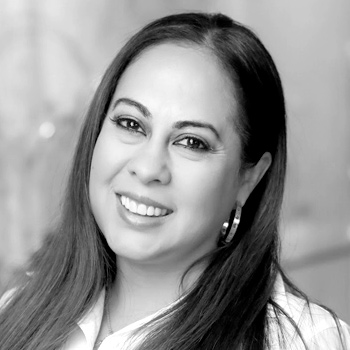
Carolina Corrales
Account Manager
Carolina Corrales is an Account Manager at ClientPay. She specializes in making the billing process simple for building and design professionals nationwide, allowing them to get paid quickly and easily for their services.
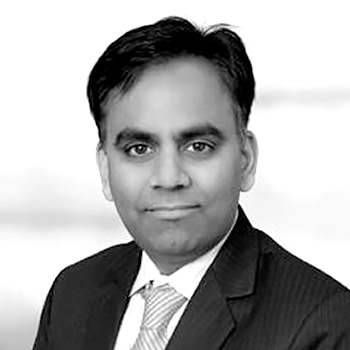
Dr. Badri Hiriyur
CEO
Dr. Badri Hiriyur is the founder and CEO of T2D2. Prior to this role, he was the Director of AI at Thornton Tomasetti – a global leader in structural engineering and forensics. At Thornton Tomasetti, Dr. Hiriyur focused on developing applications leveraging AI and ML to transform workflows and processes in the AEC sector. Dr. Hiriyur has an extensive background in deep learning, computer vision and robotics. Dr. Hiriyur has a master’s degree from Johns Hopkins University and a Ph.D. from Columbia University.
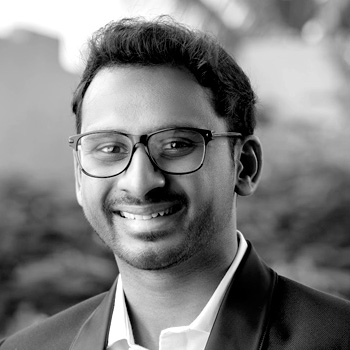
Altaf Ganihar
Founder and CEO
Strong research background in computer graphics & geometry processing. Has over ten international publications & multiple patents in the domain of computer graphics, geometry & computer vision. 7+ years of experience at the intersection of Architecture, Construction & Tech. Built numerous tools/plugins to improve efficiency for design-construction workflows. Former project lead of the IDH (India Digital Heritage) project. The team created a workflow to digitize cultural heritage sites & successfully digitized the UNESCO world heritage site of Hampi in India.

Greg Barto
Head of Partnerships
With 12 years in technology, I’ve spent the past 6 at Canvas, joining as one of the first hires. I’ve witnessed Canvas’s evolution from its nascent stages to a multi-million dollar enterprise, serving thousands of architecture/remodeler customers. Today, my role is predominantly customer-facing, where I liaise and foster relationships with our largest partners and enterprises, ensuring Canvas is valuable for all home improvement professionals.
1:15 – 2:15 PM
2:15 – 3:15 PM
Track Sessions #3
3:15 – 3:30 PM
3:30 – 4:30 PM
Track Sessions #4
3:15 – 3:30 PM

Dionne Darling
VP of Brand Partnerships
Dionne Darling has been with The A|N Media Group for over five years. As A|N’s Associate Publisher, she manages A|N’s Texas headquarters and handles accounts in the West, Southwest and Chicago territories.
Dionne has over 25 years of direct B2B sales and business development experience. Dionne holds an Associate Degree from El Centro Junior College at Dallas, Texas.

Aaron Seward
Editor-in-Chief
Aaron Seward is Editor-in-Chief of The Architect’s Newspaper. Seward is an award-winning editor whose career has centered on interpreting architecture for the profession and the general public. He was editor of Texas Architect magazine for six years and prior to that held several positions at AN, including executive editor. In addition to those publications, Seward’s writing on architecture, culture, and the built environment has appeared in Architect, Curbed, Domus, Metropolis, and other publications. He has a BA in Literature, Writing and the Arts from The New School for Social Research.
10:30 – 11:30 AM
Architecture has begun a journey into the Metaverse. The building of virtual social environments drives the 150 Billion dollar gaming industry, but shouldn’t architects be a part of this major development in social space? Documenting his journey in AN, Ryan Scavnicky has been traversing these environments (some designed by high-profile architecture firms) and is here to tell us what it is like, and to make some predictions for potential futures. It starts with how architecture needs to be better involved in the digital social platforms already in common use today, from TikTok, to Twitch, and everything in between. In the end we will ask: What is the future of Architectural Content?

Ryan Scavnicky
Founder
Ryan Scavnicky is the founder of Extra Office, a design studio investigating architecture culture through memes and media production to seek new agencies for critical practice. This has led to a recent interest in the overlaps between architecture theory and the cultural spaces of video games — the discussions of which can be found on TikTok, Twitch, and YouTube. Ryan teaches architecture studio and media theory at Kent State University. His work is published in Architect’s Newspaper, PLAT, ArchDaily, SURFACE Mag, Bartlebooth, Kotaku, UCLA Pool, and Hyperallergic. In addition, he spent 6 years in practice with international offices including GBBN architects in Beijing, Coop-Himmelblau in Vienna, and studioTECHNE in Cleveland. He studied at L’Ecole Speciale d’Architecture in Paris and DAAP in Cincinnati for his Masters of Architecture, and received his Masters in Design Theory and Pedagogy with distinction from SCI-Arc in Los Angeles. Recently, Ryan served as the Visiting Teaching Fellow at the School of Architecture founded by Frank Lloyd Wright as the Taliesin Fellowship in 1932. He has previously held appointments at the University of Cincinnati and SCI-Arc. Ryan lives in Akron with his partner Kristen Mimms Scavnicky and their two cats, Mr. Smee and Tink.
11:30 – 11:45 PM
11:45 – 12:00 PM
12:00-1:00 PM
Innovations are rapidly changing the engineering landscape, from computational modeling to data visualization and integrated building analysis. CORE studio is Thornton Tomasetti’s virtual incubator of ideas. CORE studio provides a valuable interface among design and construction teams, developing new workflows and processes that promote collaboration and enhance building design. CORE’s analyses of today’s practices allow CORE to envision the optimized workflows of tomorrow.
T2D2 is an AI-powered building facade image analysis and physical asset management platform. T2D2 was incubated within CORE.AI where it was trained by forensic civil engineering experts on thousands of images. Asset owners and engineers can now perform facade assessments quickly and more frequently, catching small problems before they become major issues.

Aaron Seward
Editor-in-Chief
Aaron Seward is Editor-in-Chief of The Architect’s Newspaper. Seward is an award-winning editor whose career has centered on interpreting architecture for the profession and the general public. He was editor of Texas Architect magazine for six years and prior to that held several positions at AN, including executive editor. In addition to those publications, Seward’s writing on architecture, culture, and the built environment has appeared in Architect, Curbed, Domus, Metropolis, and other publications. He has a BA in Literature, Writing and the Arts from The New School for Social Research.
Benjamin Howes
VP, Director of Application Development, CORE Studio, Thornton Tomasetti
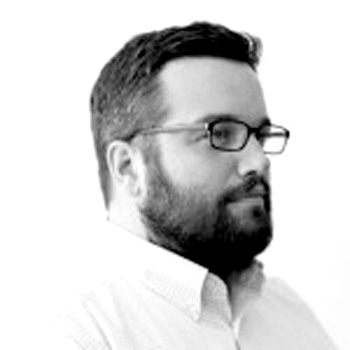
Benjamin Howes
VP, Director of Application Development, CORE Studio, Thornton Tomasetti
Senior Computational Designer, Benjamin Howes is responsible for building custom design tools and developing computational solutions for CORE studio. Benjamin is our go-to person for creative problem solving, such as the technique for façade penalization on the Edmonton Arena. He leads the efforts on developing TTX, together with Kenny, Elcin, and Jonatan. He received a bachelor’s degree in architecture from Pratt and a master’s degree in product architecture and engineering from Stevens Institute. Currently, he is teaching a course called “Parametrics” at the Pratt Institute that introduces graduate students to parametric and computational design. His previous work experience includes architectural design and founding a sustainable design company.
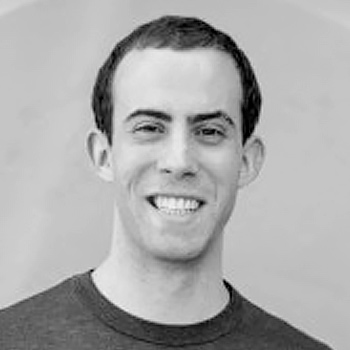
Jonathan Ehrlich
Chief Operating Officer
Jonathan Ehrlich is the COO of T2D2, an artificial intelligence-powered asset inspection software platform.
He was previously the Co-Founder of Lightning Capital, a vertically-integrated technology-focused real estate company. Before that, he served as the Director of Strategy, Corporate Development and Partnerships at ButterflyMX, a leader in real estate technology. Prior, Jonathan specialized in the financing and development of mega infrastructure and real estate projects, serving as the Director of Budget and Risk Management for the $3.9 billion New NY Bridge to replace the Tappan Zee. Prior to that he served as Special Assistant to the Chairman of the New York State Thruway Authority.
He is a Member-at-Large of the Young Leaders Executive Committee at the UJA Federation of NY and graduated with a BA from Tufts University and an MBA from the NYU Stern School of Business.
1:00 – 1:15 PM
1:15 – 2:15 PM
2:15-3:15 PM
Earth, with 7 billion people today and having a maximum carrying capacity of 10 billion people, is faced with overpopulation and increased migration to cities. With this very real pressure of accommodating the increasing population within decades, all industries are in a race to adopt and grow in an agile and sustainable manner, including construction, which has been notoriously slow to change.
What can we learn from other industries, and how can we collaborate with them? How can we build better, faster and more sustainably for all economies? Through adopting the methods of other industries operate, the AEC industry can take advantage of technologies that have been used by aerospace, automotive and product manufacturing for decades. Unlike other industries, AEC can’t always focus on one “product,” but can optimize workflows that allow end-to-end control in both customization and standardization. GENx works on mastering mass customization, while optimizing it to lower embodied energy throughout its lifecycle, from design to fabrication, as well as enabling modular and timber construction.
This presentation introduces not only ideas about workflow optimization in vertical urbanism, but also offers case studies focusing on technologies we use today, and on future trends and changing business models that the AEC industry can benefit from.
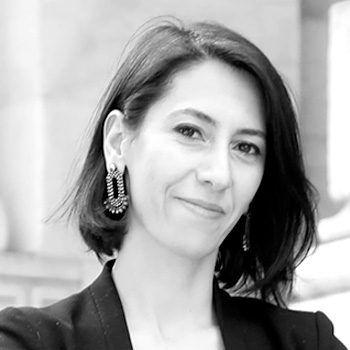
Ilkay C. Standard
Founder
Ilkay Can-Standard is an architectural technologist and founder of GENx Design and Technology, a modern innovation hub committed to lead the 4th Industrial Revolution at a global scale. With 15 years of experience in the AEC industry, Ilkay has managed projects that required the most advanced use of technologies in 7 different countries. GENx teams focus on diminishing the gaps in the AEC industry and helping stakeholders achieve intended budgets, timelines and sustainability objectives through the integration of advanced technologies to project management. In addition to advancing Building Information Modeling (BIM) experience in high-rise and large-scale projects, her team is leading Generative Design and Automation through CATIA and 3DS Platforms.
İlkay is an NJIT Graduate alumnus of Architecture and is currently teaching at NYU while simultaneously collaborating with multiple universities across the globe. Prior to founding GENx, İlkay was an Associate Principal at Kohn Pedersen Fox Associates in NYC where she led multiple award-winning projects both locally and globally. As previous Chair of CTBUH Future Leaders Global Committee and current Board of Trustee CTBUH NY Chapter, she is fostering open dialogue between architects, engineers, developers and the academia to develop responsible buildings and cities for the future.

Aaron Seward
Editor-in-Chief
Aaron Seward is Editor-in-Chief of The Architect’s Newspaper. Seward is an award-winning editor whose career has centered on interpreting architecture for the profession and the general public. He was editor of Texas Architect magazine for six years and prior to that held several positions at AN, including executive editor. In addition to those publications, Seward’s writing on architecture, culture, and the built environment has appeared in Architect, Curbed, Domus, Metropolis, and other publications. He has a BA in Literature, Writing and the Arts from The New School for Social Research.
3:15 – 3:30 PM
3:30-4:30 PM
Byte Sized Buildings is about the digital expansion into design, operations, and culture. Most importantly, it discusses how architects can think and contribute toward a more civic-focused use of the digital. Central to the presentation is a way to use digital platforms to introduce alternative constructs for the way we functionalize and experience public spaces, brands, and buildings.
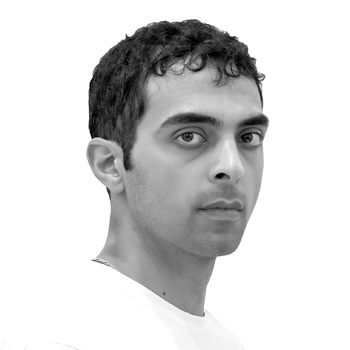
Joe Ghaida
Technology Director
Joe Ghaida is a technology director and design researcher at Animate Lot. Merging both design of systems and design of forms, his work is focused on the folding of both architecture and dynamic information into malleable and data driven solutions.

Aaron Seward
Editor-in-Chief
Aaron Seward is Editor-in-Chief of The Architect’s Newspaper. Seward is an award-winning editor whose career has centered on interpreting architecture for the profession and the general public. He was editor of Texas Architect magazine for six years and prior to that held several positions at AN, including executive editor. In addition to those publications, Seward’s writing on architecture, culture, and the built environment has appeared in Architect, Curbed, Domus, Metropolis, and other publications. He has a BA in Literature, Writing and the Arts from The New School for Social Research.
4:30 – 4:45 PM
10:30 – 11:30 AM
Research and pedagogy that focuses on radical low-carbon and health building materials is critically needed to address global climatic, societal, and economic urgencies. Specifically, earth- and bio-based materials have been receiving increasing attention due to their availability, ease of application, and sustainable features. However, earth- and bio-based materials are yet to be integrated into mainstream projects and building technology curricula worldwide, and raw (non-stabilized) mixtures require further research to increase durability, construction pace, and applicable usages. In this presentation, Prof. Lola Ben-Alon will share her ongoing work at the Natural Materials Lab at Columbia GSAPP, where she catalyzes ecological knowledge—both traditional and futuristic—on earth- and bio-based materials throughout their design, construction, fabrication, and policy arenas.

Lola Ben-Alon
Director
Lola Ben-Alon is an Assistant Professor at the Graduate School of Architecture at Columbia University, where she also serves as Director of the Building Technology sequence. She is focused on research in building materials and energy performance. She brings expertise in natural and bio-based materials, Life Cycle Analysis (LCA), and exhibitions.

Paige Davidson
Associate Newsletter Editor
Paige Davidson is the Associate Newsletter Editor and a contributing writer at The Architect’s Newspaper. Davidson received her Bachelor of Arts in Architecture from Hobart & William Smith Colleges, where she was awarded the Eric Cohler Internship and Travel Award and studied Scandinavian Design in Denmark and Sweden. After graduating, she pursued her Master of Design in Interior Architecture with a focus on adaptive reuse design from the Rhode Island School of Design (RISD). While at RISD she wrote her thesis, Amending the Idle: An Analysis of Urban Idle Spaces + Third Places. Davidson has experience working at both architecture and interior design firms.
11:30 – 11:45 PM

Anna Liza Montenegro
Director of Marketing
Anna Liza Montenegro develops design technology conferences and training for architecture, engineering and construction (AEC) professionals as a forum to exchange innovative strategies, best practices, and facilitate discussions into the technology trends driving significant change in building design and construction. As Director of Marketing, these events are offered to AEC professionals by Microsol Resources, a value-added reseller of Autodesk, Bluebeam, CADLearning, Enscape, Rhino, V-Ray, and their various technology partnerships. When not marketing, she loves spending time with her kids, traveling, and summers in Maine.
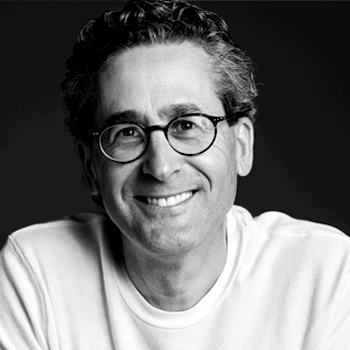
Steven Burns, FAIA
Chief Creative Officer
Steven Burns, FAIA, is the Chief Creative Officer of BQE Software. Steven received his Master of Architecture degree from the Harvard Graduate School of Design, spent 7 years at SOM, and founded his own architecture firm, before pursuing his passion for business management software. In 2009, he created ArchiOffice, which he later sold to BQE Software. Steve is now focused on the product development of BQE CORE and is a global speaker on topics related to firm management and emerging technologies.
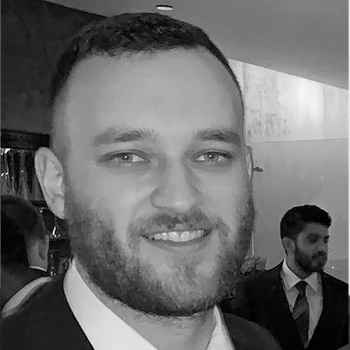
Connor Tluck
Solutions Architect
Connor Tluck, Nearmap’s Solution Architect brings a unique skillset from his civil engineering background combined with a passion for python development and data analytics projects. He was a civil engineer for 5 years and was involved in highway design, work zone traffic control, drainage design and rail design for some of the largest design build projects in the country. With his background, he finds innovative solutions for clients which integrate well with existing workflows.

Jeff DeCaito
Founding Principal
Jeff has been working with lighting and controls since the early 2000’s, when he worked on energy rebate projects for an ESCO while earning a degree from New Jersey City University in 2004. Passionate about sports, he played baseball for both Sacred Heart University and NJCU during his college career before landing positions with the New Jersey Nets and Chicago Cubs organizations. Jeff then went on to start his own MLB certified agency representing top young talent in baseball, where he gained experience in contract negotiations and business operations before returning full-time back into lighting.
While transitioning back into the industry, Jeff held a job with a top distributor in New Jersey working alongside contractors to secure and manage lighting projects for Macy’s and other major accounts. Before co-founding City Lighting, Jeff was running day-to-day operations and managing key distributor and end-user accounts for The Lighting Group. Experiencing various aspects of the lighting business over the years has given Jeff a deep understanding of the industry and taught him how to maintain strong relationships with consistent, reliable service.
11:45 – 12:00 PM
12:00-1:00 PM
You can’t mitigate the emissions that you don’t measure. Through a series of case studies, representatives of leading sustainable design firms will discuss the tools they use to assess carbon emissions and how these assessments shape project outcomes. This session will cover both energy- and material-related emissions, as well as how they come together in a “total carbon” assessment. Rather than a one-size-fits-all approach, we will focus on how teams can leverage data to identify specific and relevant decarbonization pathways for a particular project. Our discussion aims to be accessible to people unfamiliar with carbon accounting while offering fresh insights to experts, showing how every project—big or small—can play a role in our low-carbon future.
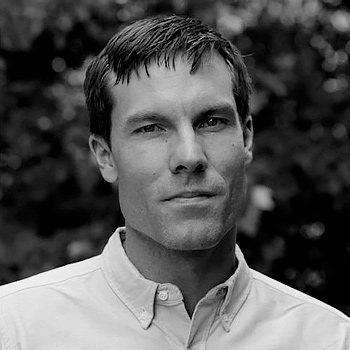
Jack Rusk
Climate Strategist
Jack Rusk is a Climate Strategist for EHDD, an architecture firm with offices in San Francisco and Seattle. In addition to my involvement in the firm’s design and planning projects, I’m the lead technical developer of EHDD’s EPIC tool. In the last few years, I’ve presented research at the International Mass Timber Conference, applied machine learning and remote sensing techniques to model how urbanization is changing people’s exposure to natural hazards in mountainous areas, and written articles for a number of architecture publications and peer-reviewed research journals.
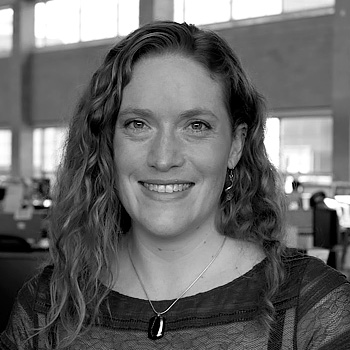
Efrie Escott
Principal
Efrie Escott investigates materials, ecosystems, and digital technologies as a Principal in the KieranTimberlake Research Group, translating data-driven research into building design. She was a core member of the development team for Tally, the founder of Philadelphia’s Dynamo User Group, and a member of the USGBC Materials and Resources Technical Advisory Group. She lectures internationally about environmental research and teaches at the University of Pennsylvania.
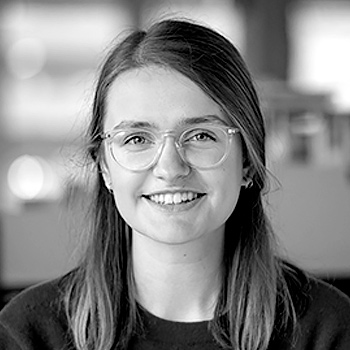
Alex Ianchenko
Researcher
Alex Ianchenko works as a researcher and designer with the Miller Hull Partnership in Seattle. Her passion for data management and visualization informs her ongoing work in whole-building life cycle assessment, building performance forecasting, and mapping. Today, Alex is dedicated to applying her background to climate advocacy as the regional lead of Carbon Leadership Forum – Seattle.

Paige Davidson
Associate Newsletter Editor
Paige Davidson is the Associate Newsletter Editor and a contributing writer at The Architect’s Newspaper. Davidson received her Bachelor of Arts in Architecture from Hobart & William Smith Colleges, where she was awarded the Eric Cohler Internship and Travel Award and studied Scandinavian Design in Denmark and Sweden. After graduating, she pursued her Master of Design in Interior Architecture with a focus on adaptive reuse design from the Rhode Island School of Design (RISD). While at RISD she wrote her thesis, Amending the Idle: An Analysis of Urban Idle Spaces + Third Places. Davidson has experience working at both architecture and interior design firms.
1:00 – 1:15 PM

Altaf Ganihar
Founder and CEO
Strong research background in computer graphics & geometry processing. Has over ten international publications & multiple patents in the domain of computer graphics, geometry & computer vision. 7+ years of experience at the intersection of Architecture, Construction & Tech. Built numerous tools/plugins to improve efficiency for design-construction workflows. Former project lead of the IDH (India Digital Heritage) project. The team created a workflow to digitize cultural heritage sites & successfully digitized the UNESCO world heritage site of Hampi in India.

Anna Liza Montenegro
Director of Marketing
Anna Liza Montenegro develops design technology conferences and training for architecture, engineering and construction (AEC) professionals as a forum to exchange innovative strategies, best practices, and facilitate discussions into the technology trends driving significant change in building design and construction. As Director of Marketing, these events are offered to AEC professionals by Microsol Resources, a value-added reseller of Autodesk, Bluebeam, CADLearning, Enscape, Rhino, V-Ray, and their various technology partnerships. When not marketing, she loves spending time with her kids, traveling, and summers in Maine.
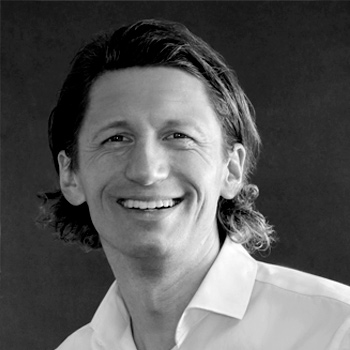
Aurimas Sabulis
CEO
Aurimas Sabulis is CEO of Dextall and a pioneer behind the revolutionary software solution that shortens the existing design process of mid and high-rise building exteriors by more than twenty times. In addition to improving design process inefficiencies, the software also drives sustainability and net-zero energy goals throughout the design process. Under his leadership, Dextall has since qualified as an approved prefab panel Component Manufacturer for all affordable housing retrofit projects in the state of New York by the New York State Energy Research and Development Authority (NYSERDA). Mr. Sabulis’ more than 20+ year career in construction has been dedicated to utilizing technologies to advance the fields of design and construction through countless award-winning and groundbreaking projects within the United States. Mr. Sabulis believes the power of technology combined with smart business solutions creates sustainability and long-term value in mid to high-rise building construction

Patrick Chopson
Co-Founder
Focusing on the crossover between architecture and technology, Patrick Chopson leads cove.tool, a web-based design software for buildings using machine learning and automation to drive decision making. As Co-Founder, he oversees product development and research. A graduate of Georgia Tech with a Master’s in High Performance Buildings, he is a licensed architect with over 17 years of experience in architecture, research, and mechanical engineering firms. Prior to cove.tool, he co-founded a successful building performance consulting firm Pattern r+d. He is featured in multiple publications include Architect Magazine, Tech Crunch, Site Selection, ArchDaily, and more.

Carolina Corrales
Account Manager
Carolina Corrales is an Account Manager at ClientPay. She specializes in making the billing process simple for building and design professionals nationwide, allowing them to get paid quickly and easily for their services.
1:15 – 2:15 PM
2:15-3:15 PM
As the urgency to address climate change and halt greenhouse gas emissions (GHG) continues to grow, designers have a responsibility to make smart design decisions to minimize their buildings’ GHG emissions. The steps to designing a carbon-smart building are two-fold: minimize embodied carbon and bring operational carbon to zero. This session will look at the holistic carbon profile of the built environment and the cutting-edge tools and processes that design teams can use to design carbon out of their projects.
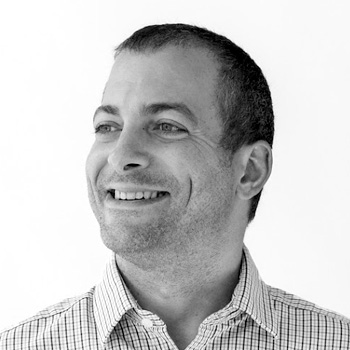
Bret Mantyk
Associate
As associate of Atelier Ten, Bret Mantyk LEED AP BD+C is an experienced sustainable design consultant and LEED knowledge and administration expert. He has managed various projects that range from institutional buildings, cultural and performance centers, government facilities and school academies. He is one of the founding members of the Urban Green Council’s Programs Committee and has presented at various events including Greenbuild.
With his comprehensive understanding of the nuances and details of LEED, Bret has successfully managed many different types of projects through the LEED process. These projects include the LEED Platinum Kohler Environmental Center at Choate Rosemary Hall, the LEED Platinum Kroon Hall for Yale School of Forestry & Environmental Studies, and the LEED Gold Weill Cornell Medical Center Belfer Research Building. Other certified projects include the New York Department of Health and Mental Hygiene headquarters, The Abraham Joshua Heschel School, and Harvard Business School Tata Hall.
With a B.S. in Mechanical Engineering from the University of Detroit Mercy, Bret worked as a mechanical engineer before joining Atelier Ten’s team. He is one of the founding members of the Urban Green Council’s Programs Committee and achieved a 2015 Service Award. Bret is a LEED Accredited Professional and has served as a GBCI LEED Reviewer for two years.

Paige Davidson
Associate Newsletter Editor
Paige Davidson is the Associate Newsletter Editor and a contributing writer at The Architect’s Newspaper. Davidson received her Bachelor of Arts in Architecture from Hobart & William Smith Colleges, where she was awarded the Eric Cohler Internship and Travel Award and studied Scandinavian Design in Denmark and Sweden. After graduating, she pursued her Master of Design in Interior Architecture with a focus on adaptive reuse design from the Rhode Island School of Design (RISD). While at RISD she wrote her thesis, Amending the Idle: An Analysis of Urban Idle Spaces + Third Places. Davidson has experience working at both architecture and interior design firms.
3:15 – 3:30 PM
3:30-4:30 PM
As professionals who readily engage with large and complex data sets in our day-to-day work, architects and engineers are uniquely positioned to tackle the issues related to measuring and interpreting embodied carbon data on projects. In this session we will discuss a variety of approaches that we are utilizing in the enclosure and structural engineering fields for tracking and reducing embodied carbon as designs evolve from ideas into high fidelity models. The examples and approaches discussed will highlight how design professionals can leverage the technology and skills that already exist within their practices, and aim them towards decarbonization efforts in the built environment.
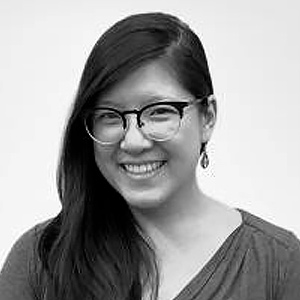
Katherine Chan
Senior Associate
Katherine Chan, MSFE is a façade engineer and educator. As Project Manager at Walter P Moore, she leads design through integration of detail development and technical performance. A founding member of the WPM DEI Council, Kat engages in community impact work, including WPM’s participation in the design collaborative Design Advocates. Kat has a degree in structural engineering from Columbia University, and she teaches as part of Adjunct Faculty at Columbia’s GSAPP. She has also participated in lectures and crits at MIT, Pratt, Hofstra University, and City Tech. Kat is founding Co-Chair of the Society of Façade Engineering North America Hub.
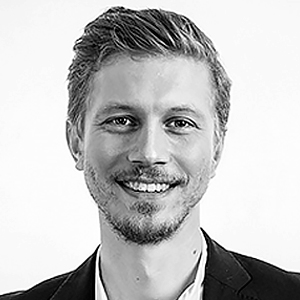
Gustav Fagerström
Principal
Gustav Fagerström, ARB leads computational modeling for structural and facade engineering at Walter P Moore. He has global experience in all stages of projects in over 10 different countries, having practiced with Urban Future Organization, Kohn Pedersen Fox Associates, UNStudio, and BuroHappold Engineering. His work has been exhibited and published in Europe, the Americas, and Asia and presented at Autodesk University, the Venice Architecture Biennale, CAADRIA, ACADIA, FABRICATE, and the SmartGeometry conference. Currently, he is a faculty member at Pratt Institute and a consultant at PennDesign. Fagerström has also served on various design juries and lectured at Yale, the Architectural Association, UCL Bartlett, the Royal Institute of Technology, and the Royal Academy of Fine Arts, Stockholm.
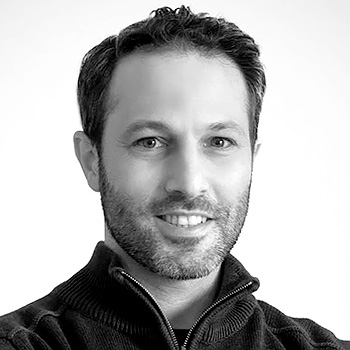
Jared Friedman
Senior Associate
RA
Jared is a licensed architect and design technologist who currently works as a Computational Product Manager in the New York City office at Walter P Moore. Jared has taught coursework related to BIM and Computational Design at The Graduate School of Architecture, Planning and Preservation at Columbia University, and has lectured at numerous conferences and universities on the subjects. Much of his work focuses on how data and computational design processes can be applied towards embodied carbon reductions in the built environment.

Paige Davidson
Associate Newsletter Editor
Paige Davidson is the Associate Newsletter Editor and a contributing writer at The Architect’s Newspaper. Davidson received her Bachelor of Arts in Architecture from Hobart & William Smith Colleges, where she was awarded the Eric Cohler Internship and Travel Award and studied Scandinavian Design in Denmark and Sweden. After graduating, she pursued her Master of Design in Interior Architecture with a focus on adaptive reuse design from the Rhode Island School of Design (RISD). While at RISD she wrote her thesis, Amending the Idle: An Analysis of Urban Idle Spaces + Third Places. Davidson has experience working at both architecture and interior design firms.
4:30 – 4:45 PM
10:30 – 11:30 AM
Cities like New York must rapidly deploy deep energy retrofits throughout their existing building stock in order to achieve net-zero emissions by 2050. However, the AEC industry currently lacks economically viable solutions to meet this urgent need. The problem is further complicated because most retrofit projects must be implemented with tenants remaining in place during construction. This presentation will introduce a new approach to deep energy retrofits called Hydronic Shell, in which the new HVAC and facade systems are integrated into prefab modular panels that can be installed completely from the exterior of the building, reducing costs and minimizing disruption to the tenants inside. The talk will include a technical overview of the Hydronic Shell system, as well as a discussion of retrofit economics and how an industrialized approach to retrofits can dramatically reduce project costs.

David Goldstein
Founder
David J. Goldstein is a mechanical engineer based in New York City with 15+ years of experience designing HVAC systems in residential and commercial buildings. He is a licensed Professional Engineer in New York State as well as a LEED AP and WELL AP.
David is the CEO of Hydronic Shell Technologies, which he founded in 2020 with the mission of transforming buildings for a net-zero future. HST is developing a modular central HVAC system called Hydronic Shell that is integrated within facade panels that form an insulated shell around the building. The system leverages the principles of industrialized construction to deliver deep energy retrofits that are cost-effective and minimally invasive, while deployable at the scale necessary for cities like New York to achieve net-zero by 2050.
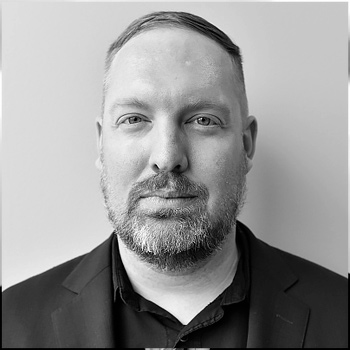
Marty Wood
Program Director
Marty Wood is the Program Director for The Architect’s Newspaper’s Facades+ Conferences and other AN events and initiatives that bring together AEC professionals to share their stories, expertise, and projects. As a writer, he’s contributed to The Architect’s Newspaper, Metropolis, and other design publications. He is also a visiting instructor at Pratt Institute. Wood has a BA in Communications from San Francisco State University and a M.S. from Columbia University GSAPP.
11:30 – 11:45 PM

Anna Liza Montenegro
Director of Marketing
Anna Liza Montenegro develops design technology conferences and training for architecture, engineering and construction (AEC) professionals as a forum to exchange innovative strategies, best practices, and facilitate discussions into the technology trends driving significant change in building design and construction. As Director of Marketing, these events are offered to AEC professionals by Microsol Resources, a value-added reseller of Autodesk, Bluebeam, CADLearning, Enscape, Rhino, V-Ray, and their various technology partnerships. When not marketing, she loves spending time with her kids, traveling, and summers in Maine.

Steven Burns, FAIA
Chief Creative Officer
Steven Burns, FAIA, is the Chief Creative Officer of BQE Software. Steven received his Master of Architecture degree from the Harvard Graduate School of Design, spent 7 years at SOM, and founded his own architecture firm, before pursuing his passion for business management software. In 2009, he created ArchiOffice, which he later sold to BQE Software. Steve is now focused on the product development of BQE CORE and is a global speaker on topics related to firm management and emerging technologies.

Connor Tluck
Solutions Architect
Connor Tluck, Nearmap’s Solution Architect brings a unique skillset from his civil engineering background combined with a passion for python development and data analytics projects. He was a civil engineer for 5 years and was involved in highway design, work zone traffic control, drainage design and rail design for some of the largest design build projects in the country. With his background, he finds innovative solutions for clients which integrate well with existing workflows.

Jeff DeCaito
Founding Principal
Jeff has been working with lighting and controls since the early 2000’s, when he worked on energy rebate projects for an ESCO while earning a degree from New Jersey City University in 2004. Passionate about sports, he played baseball for both Sacred Heart University and NJCU during his college career before landing positions with the New Jersey Nets and Chicago Cubs organizations. Jeff then went on to start his own MLB certified agency representing top young talent in baseball, where he gained experience in contract negotiations and business operations before returning full-time back into lighting.
While transitioning back into the industry, Jeff held a job with a top distributor in New Jersey working alongside contractors to secure and manage lighting projects for Macy’s and other major accounts. Before co-founding City Lighting, Jeff was running day-to-day operations and managing key distributor and end-user accounts for The Lighting Group. Experiencing various aspects of the lighting business over the years has given Jeff a deep understanding of the industry and taught him how to maintain strong relationships with consistent, reliable service.
11:45 – 12:00 PM
12:00-1:00 PM
Description: Architecture has a long history of innovation and a strong overlap with the development of new and novel technologies. Having been exposed to the technology-driven side of the profession, many architects are curious about putting their skills to use in more tech-centric roles both within AEC and adjacent fields. Come listen to expert career consultants, Jake Rudin and Erin Pellegrino, talk about their own transitions and work in tech, as well as some ideas on how to find the right role (or the right talent if you’re looking). The conversation will consist of a 30-minute presentation followed by a lively Q&A on topics from hiring, career transitions, architectural startups, and more.
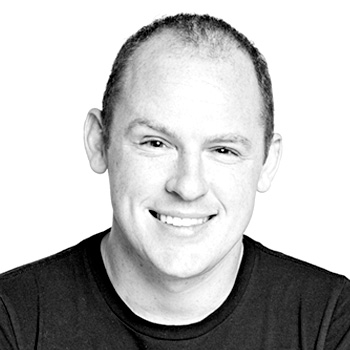
Jake Rudin
Co-Founder
Beyond his role as co-founder of Out of Architecture, Jake Rudin is a member of the Innovation and Advanced Creation teams at Adidas where he leads digital technologies, pattern engineering, and computational design. He holds a Bachelor of Architecture from Cornell University, a Master in Design Studies (with a concentration in Technology) from Harvard University’s Graduate School of Design, and an MBA from the Quantic School of Business and Technology. Jake has created a number of award-winning projects throughout his design career, including footwear designs that were featured in Fast Company, built projects that received Architizer A+ Awards, photography named Wanderlust Travel Photo of the Year and Nikon’s Best of College Photography, and a Historic Preservation Award for his work restoring a Richard Meier-designed home. Prior to pivoting out of the architectural field, Jake worked around the world for firms including Massimiliano Fuksas Architects, ZGF, and the Shenzhen Institute of Building Research. Additionally, Jake has extensive professorial experience, teaching and coaching in architecture and design fields at universities including Harvard, Cornell, Northeastern, and Portland State University. He is currently actively involved in the startup community mentoring and advising early stage startups across EdTech, InsurTech, AECTech, and others.
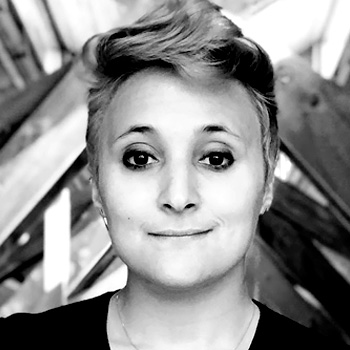
Erin Pellegrino
Co-Founder
In addition to her work as co-founder of Out of Architecture, Erin Pellegrino is the founder and principal of Matter, a design/build studio that explores design problems through graphic design, furniture, and smallscale architectural work. Matter has completed award-winning projects in architecture, product and brand design, and has been recognized globally. She holds a Bachelor of Architecture from Cornell University, a Master of Architecture II from the Harvard Graduate School of Design, and an MBA from the Quantic School of Business and Technology. Erin has been recognized with an Autodesk BuildSpace Fellowship, First Prize in the 2021 Rethinking the Future Design Awards, an AIA New England Design Honor Award, a Core77 Design Award in Built Environment, two Architizer A+ Awards, a Paul M. Heffernan International Fellowship, and a nomination for the EU Mies Van der Rohe Award. Her work on Alpine Shelter Skuta was featured on the cover of Phaidon Press’s publication Environmental Living. Early in her career, she trained in the offices of Tod Williams Billie Tsien Architects and Studio Gang. Erin is also a Visiting Lecturer at Cornell University and leads design/ build studio and fabrication courses at New Jersey Institute of Technology. In 2018, NCARB named Erin their inaugural Scholar of Professional Practice, recognizing her commitment to incorporating issues of ethics and equity into architectural training. Cornell then recruited her to redesign and teach the department’s Professional Practice course, where she merges the course’s traditional curriculum with a consideration of issues like fair pay, self-efficacy, and gender and racial disparities in the profession.

Marty Wood
Program Director
Marty Wood is the Program Director for The Architect’s Newspaper’s Facades+ Conferences and other AN events and initiatives that bring together AEC professionals to share their stories, expertise, and projects. As a writer, he’s contributed to The Architect’s Newspaper, Metropolis, and other design publications. He is also a visiting instructor at Pratt Institute. Wood has a BA in Communications from San Francisco State University and a M.S. from Columbia University GSAPP.
1:00 – 1:15 PM

Patrick Chopson
Co-Founder
Focusing on the crossover between architecture and technology, Patrick Chopson leads cove.tool, a web-based design software for buildings using machine learning and automation to drive decision making. As Co-Founder, he oversees product development and research. A graduate of Georgia Tech with a Master’s in High Performance Buildings, he is a licensed architect with over 17 years of experience in architecture, research, and mechanical engineering firms. Prior to cove.tool, he co-founded a successful building performance consulting firm Pattern r+d. He is featured in multiple publications include Architect Magazine, Tech Crunch, Site Selection, ArchDaily, and more.

Anna Liza Montenegro
Director of Marketing
Anna Liza Montenegro develops design technology conferences and training for architecture, engineering and construction (AEC) professionals as a forum to exchange innovative strategies, best practices, and facilitate discussions into the technology trends driving significant change in building design and construction. As Director of Marketing, these events are offered to AEC professionals by Microsol Resources, a value-added reseller of Autodesk, Bluebeam, CADLearning, Enscape, Rhino, V-Ray, and their various technology partnerships. When not marketing, she loves spending time with her kids, traveling, and summers in Maine.

Altaf Ganihar
Founder and CEO
Strong research background in computer graphics & geometry processing. Has over ten international publications & multiple patents in the domain of computer graphics, geometry & computer vision. 7+ years of experience at the intersection of Architecture, Construction & Tech. Built numerous tools/plugins to improve efficiency for design-construction workflows. Former project lead of the IDH (India Digital Heritage) project. The team created a workflow to digitize cultural heritage sites & successfully digitized the UNESCO world heritage site of Hampi in India.

Aurimas Sabulis
CEO
Aurimas Sabulis is CEO of Dextall and a pioneer behind the revolutionary software solution that shortens the existing design process of mid and high-rise building exteriors by more than twenty times. In addition to improving design process inefficiencies, the software also drives sustainability and net-zero energy goals throughout the design process. Under his leadership, Dextall has since qualified as an approved prefab panel Component Manufacturer for all affordable housing retrofit projects in the state of New York by the New York State Energy Research and Development Authority (NYSERDA). Mr. Sabulis’ more than 20+ year career in construction has been dedicated to utilizing technologies to advance the fields of design and construction through countless award-winning and groundbreaking projects within the United States. Mr. Sabulis believes the power of technology combined with smart business solutions creates sustainability and long-term value in mid to high-rise building construction
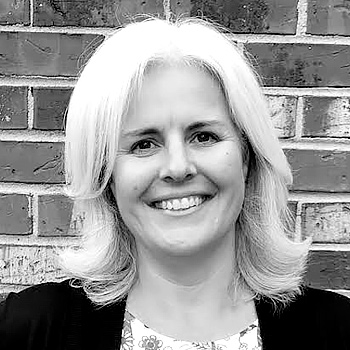
Jennifer Kresl
Business Development
Jennifer Kresl leads sales for Canvas where she focuses on helping home improvement professionals integrate Canvas into their business. With the Canvas app and built-in Scan To CAD service, architects, interior designers, and remodelers can capture a space in 3D and convert it into an editable file in various formats with just a few taps. Jen shows them how to save hours on every project.

Carolina Corrales
Account Manager
Carolina Corrales is an Account Manager at ClientPay. She specializes in making the billing process simple for building and design professionals nationwide, allowing them to get paid quickly and easily for their services.

Dr. Badri Hiriyur
CEO
Dr. Badri Hiriyur is the founder and CEO of T2D2. Prior to this role, he was the Director of AI at Thornton Tomasetti – a global leader in structural engineering and forensics. At Thornton Tomasetti, Dr. Hiriyur focused on developing applications leveraging AI and ML to transform workflows and processes in the AEC sector. Dr. Hiriyur has an extensive background in deep learning, computer vision and robotics. Dr. Hiriyur has a master’s degree from Johns Hopkins University and a Ph.D. from Columbia University.
1:15 – 2:15 PM
2:15-3:15 PM
Did you know that the AIA has a Technology in Architectural Practice Knowledge Community?
Come learn about one of the AIA’s longest running Knowledge Community!
In this session, we will give you updates on upcoming events, reflect on the tools created within the community, and how to participate in TAP. We will also preview a new awards program we have been working on — participants will be able to provide feedback and help shape it!
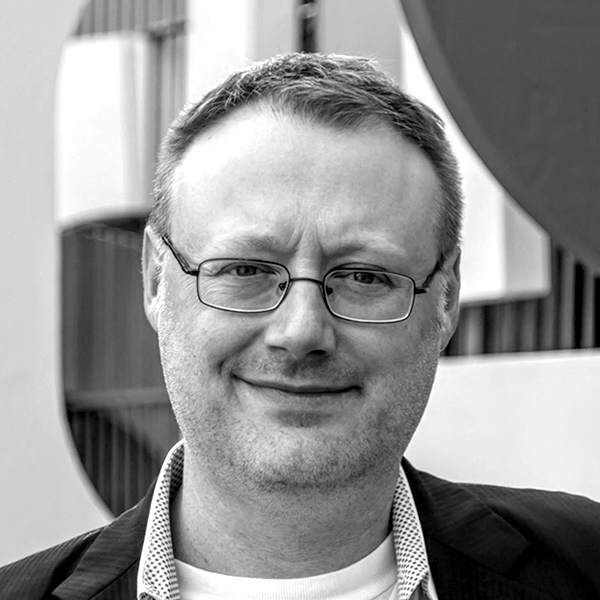
Bradford J. Prestbo
Director – Studio NYL
An exceptional leader, Bradford J. Prestbo, FAIA, is advancing the profession through his practice, advocacy, and educational efforts in the use of cutting-edge design technologies, high-performance design, and the incorporation of maker culture into the design process.
At Studio NYL, he is the Director of the Boston office, and leads many amazingly innovative groups of technical specialists developing revolutionary products and services. These range from developing generative design scripts, increasing building performance with high-performance design, and building highly sustainable structures.
Bradford also finds time to share his knowledge of advanced design technologies, high-performance design, and how maker culture is transforming our practice with the industry. He has practiced internationally, is a sought-after speaker, is frequently interviewed by publishers, and is an educator via his detailing workshops, higher-education classes, design juries, and mentorship of emerging professionals.
Bradford is actively involved in the AIA, and has been elevated to the College of Fellows for his notable contributions to the advancement of the profession of architecture. He is part of the leadership group in the AIA’s Technology in Architectural Practice Knowledge Community, and founded the Boston Society of Architect’s MakeTANK Knowledge Community, where he currently serves as the National Director.
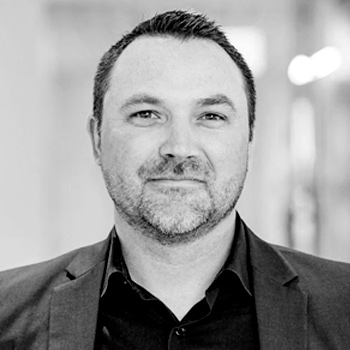
Nick Cameron
Director—Digital Practice
As Perkins&Will’s Director of Digital Practice, Nick Cameron, AIA, LEED AP takes a big-picture approach to his work, and employs a thorough understanding of how the digital practice enhances and completes the design process. Having spent the first part of his career as a designer, he now views his work as an opportunity to work alongside design teams to put the finishing touches on projects. He loves the fact that while so much of a firm’s process relies on technology, the output is analog. The product is ultimately a space that betters a child’s education, improves the wellness of patients, or enhances the functionality of an office. Nick’s passion lies in perfecting the digital process to maximize these outcomes.

Marty Wood
Program Director
Marty Wood is the Program Director for The Architect’s Newspaper’s Facades+ Conferences and other AN events and initiatives that bring together AEC professionals to share their stories, expertise, and projects. As a writer, he’s contributed to The Architect’s Newspaper, Metropolis, and other design publications. He is also a visiting instructor at Pratt Institute. Wood has a BA in Communications from San Francisco State University and a M.S. from Columbia University GSAPP.
3:15 – 3:30 PM
3:30-4:30 PM
Frustrated by loops of rework and wasted time, Perkins&Will envisioned a more collaborative and dynamic feasibility review process for its fabrication and construction partners. A process that would allow more design time and speed up decision. Working with like minded leaders at fabrication partner at Zahner, the two firms invented a shared workspace and feasibility model that produces higher design fidelity, shorter delivery schedules, and more joyful clients and communities. Learn more about this process and how it can be adapted for your work and how process improvements like this can be implemented between many partners for faster, better collaborations.
Learning Objectives
- Discuss the difficulties and roadblocks to faster, higher fidelity collaboration between design, fabrication, and construction.
- Review a collaboration process between two or more firms using this model
Learn how Apply process improvements to your own firms

Nick Cameron
Director—Digital Practice
As Perkins&Will’s Director of Digital Practice, Nick Cameron, AIA, LEED AP takes a big-picture approach to his work, and employs a thorough understanding of how the digital practice enhances and completes the design process. Having spent the first part of his career as a designer, he now views his work as an opportunity to work alongside design teams to put the finishing touches on projects. He loves the fact that while so much of a firm’s process relies on technology, the output is analog. The product is ultimately a space that betters a child’s education, improves the wellness of patients, or enhances the functionality of an office. Nick’s passion lies in perfecting the digital process to maximize these outcomes.
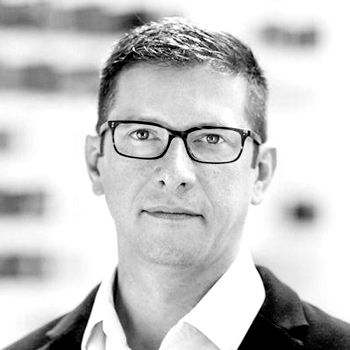
Luc Deckinga
Digital Practice Manager
As Digital Practice Manager for Computational Design, Luc brings a programmer’s rigor and designer’s creativity to every area of Perkins+Will’s diverse practice, giving designers new tools to create more sophisticated designs. Trained as an architect, his portfolio now encompasses a wide range of scales and disciplines, from robotic fabrication to environmental simulation and responsive parametric design. Luc’s work pushes at the boundaries of technology and creativity.
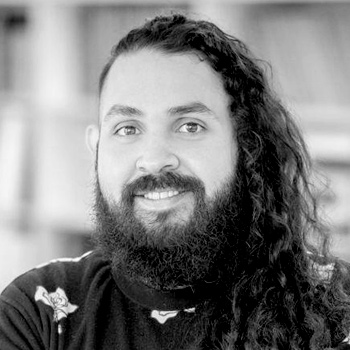
Mario Romero
Digital Practice Manager
Mario Romero is a computational designer and digital practice manager at Perkins and Will. His work primarily deals in the melding of technology and architecture including:
robotics, Digital\physical interface design, Digital fabrication (in specific, 3D printing), Modular building automation & intelligence. Mario previously worked at AS+GG in Chicago and holds a BArch from University of Illinois Chicago
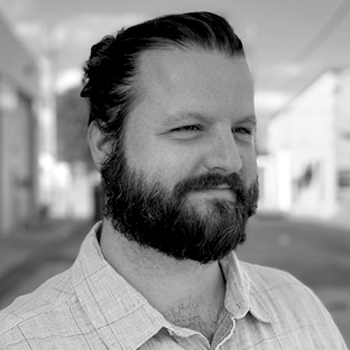
Nathan Barnes
Computational Lead, Research & Development
Nathan Barnes is the Computational Lead at Zahner. He has a background in architectural fabrication through programmatic mass customization. He is passionate about encapsulating solutions to problems through technological solutions. Additionally, he has a passion for fostering an inquisitive culture around him.
Nathan holds a master’s degree in architecture from UTA with an emphasis on digital fabrication. His current research is centered around developing software and hardware improvements to nudge forward fabrication capabilities.

Marty Wood
Program Director
Marty Wood is the Program Director for The Architect’s Newspaper’s Facades+ Conferences and other AN events and initiatives that bring together AEC professionals to share their stories, expertise, and projects. As a writer, he’s contributed to The Architect’s Newspaper, Metropolis, and other design publications. He is also a visiting instructor at Pratt Institute. Wood has a BA in Communications from San Francisco State University and a M.S. from Columbia University GSAPP.
4:30 – 4:45 PM
10:30 – 11:30 AM
Learn how developing a digital twin strategy can help you harness the convergence of the digital and physical worlds with industry leaders who are driving this transformation.

Salla Eckhardt
Director, Digital Building Lifecycle & Innovation
Center of Innovation—Microsoft
Salla identifies as a passionate and inspiring innovation leader and a change agent for the global construction and real estate industry. She is recognized as an industry game changer, and one of the most innovative and forward-thinking people in the sector. Her focus is on successful business transformation of the AECO industry with four key components: engaging stakeholders in full digital building lifecycle, communicating shared objectives in smart buildings, driving digital transformation in smart cities, and determining coherent ways to maximize productivity and innovation with intelligent cloud & intelligent edge.

Sarah Dreger
Director, Strategic Lead of Digital Transformation
Center of Innovation—Microsoft
Sarah is seasoned leader and expert in project management, dev management, BIM modeling and coordination, technical writing, and customization (lisp, macros, script, VB.net, C#, SQL, HTML, CSS, JavaScript and am learning PowerShell). She has assumed many roles throughout her career; programmer, technical writer, author, modeler, animator, researcher, advisor, marketer, manager, and strategist. Before joining Microsoft, she was the global leader of Stantec’s Digital Practice

Steven Jones
Senior Director, Industry Insights Research
Steven is a globally recognized expert in how emerging economic, practice, and technology trends are shaping the future of the design and construction industry. He speaks at conferences globally, authors the SmartMarket Report series on key industry trends, and hosts the ENR FutureTech events.
Before Dodge, Steven was Vice President of Primavera Systems (now part of Oracle), and prior to that, spent 19 years in creative and management roles with top design firms, most recently as a Principal and Board of Directors member with Burt Hill, one of the largest A/E firms in the US (now merged with Stantec). Steven holds an MBA from Wharton and a BA from The Johns Hopkins University.

Bill Kwon
Vice President of Information Technology and Digital Transformation
Bill spearheads digital transformation and technology globally at CallisonRTKL.
With nearly 20 years of experience in the architecture and design industry, his diverse background and
human-centred approach allows him to help design teams to embrace technology and data, enhance
customer journeys, sharpen strategic positioning, and eliminate inefficiency.

Anna Liza Montenegro
Director of Marketing
Anna Liza Montenegro develops design technology conferences and training for architecture, engineering and construction (AEC) professionals as a forum to exchange innovative strategies, best practices, and facilitate discussions into the technology trends driving significant change in building design and construction. As Director of Marketing, these events are offered to AEC professionals by Microsol Resources, a value-added reseller of Autodesk, Bluebeam, CADLearning, Enscape, Rhino, V-Ray, and their various technology partnerships. When not marketing, she loves spending time with her kids, traveling, and summers in Maine.

Samuel Medina
Contributing Editor
Samuel Medina is a contributing editor of The Architect’s Newspaper. He was previously the executive editor of The Architect’s Newspaper, and before that the editorial director of Metropolis magazine. As a writer, his work has been published in art and architecture magazines such as Artforum, the Art Newspaper, and Domus, among others. He recently edited a monograph on the architect Eric Owen Moss, due out this year.
11:30 – 11:45 PM

Altaf Ganihar
Founder and CEO
Strong research background in computer graphics & geometry processing. Has over ten international publications & multiple patents in the domain of computer graphics, geometry & computer vision. 7+ years of experience at the intersection of Architecture, Construction & Tech. Built numerous tools/plugins to improve efficiency for design-construction workflows. Former project lead of the IDH (India Digital Heritage) project. The team created a workflow to digitize cultural heritage sites & successfully digitized the UNESCO world heritage site of Hampi in India.

Anna Liza Montenegro
Director of Marketing
Anna Liza Montenegro develops design technology conferences and training for architecture, engineering and construction (AEC) professionals as a forum to exchange innovative strategies, best practices, and facilitate discussions into the technology trends driving significant change in building design and construction. As Director of Marketing, these events are offered to AEC professionals by Microsol Resources, a value-added reseller of Autodesk, Bluebeam, CADLearning, Enscape, Rhino, V-Ray, and their various technology partnerships. When not marketing, she loves spending time with her kids, traveling, and summers in Maine.

Carolina Corrales
Account Manager
Carolina Corrales is an Account Manager at ClientPay. She specializes in making the billing process simple for building and design professionals nationwide, allowing them to get paid quickly and easily for their services.

Patrick Chopson
Co-Founder
Focusing on the crossover between architecture and technology, Patrick Chopson leads cove.tool, a web-based design software for buildings using machine learning and automation to drive decision making. As Co-Founder, he oversees product development and research. A graduate of Georgia Tech with a Master’s in High Performance Buildings, he is a licensed architect with over 17 years of experience in architecture, research, and mechanical engineering firms. Prior to cove.tool, he co-founded a successful building performance consulting firm Pattern r+d. He is featured in multiple publications include Architect Magazine, Tech Crunch, Site Selection, ArchDaily, and more.
11:45 – 12:00 PM
12:00-1:00 PM
Digital twins are a novel and unique way to combine software and hardware. The projects require a heavy investment of both hard and soft costs. If you get it right, the payoff is worth the effort. Like with any new technology, change is constant and you may have a skills gap on your team.

Salla Eckhardt
Director, Digital Building Lifecycle & Innovation
Center of Innovation—Microsoft
Salla identifies as a passionate and inspiring innovation leader and a change agent for the global construction and real estate industry. She is recognized as an industry game changer, and one of the most innovative and forward-thinking people in the sector. Her focus is on successful business transformation of the AECO industry with four key components: engaging stakeholders in full digital building lifecycle, communicating shared objectives in smart buildings, driving digital transformation in smart cities, and determining coherent ways to maximize productivity and innovation with intelligent cloud & intelligent edge.

Sarah Dreger
Director, Strategic Lead of Digital Transformation
Center of Innovation—Microsoft
Sarah is seasoned leader and expert in project management, dev management, BIM modeling and coordination, technical writing, and customization (lisp, macros, script, VB.net, C#, SQL, HTML, CSS, JavaScript and am learning PowerShell). She has assumed many roles throughout her career; programmer, technical writer, author, modeler, animator, researcher, advisor, marketer, manager, and strategist. Before joining Microsoft, she was the global leader of Stantec’s Digital Practice

Steven Jones
Senior Director, Industry Insights Research
Steven is a globally recognized expert in how emerging economic, practice, and technology trends are shaping the future of the design and construction industry. He speaks at conferences globally, authors the SmartMarket Report series on key industry trends, and hosts the ENR FutureTech events.
Before Dodge, Steven was Vice President of Primavera Systems (now part of Oracle), and prior to that, spent 19 years in creative and management roles with top design firms, most recently as a Principal and Board of Directors member with Burt Hill, one of the largest A/E firms in the US (now merged with Stantec). Steven holds an MBA from Wharton and a BA from The Johns Hopkins University.

Bill Kwon
Vice President of Information Technology and Digital Transformation
Bill spearheads digital transformation and technology globally at CallisonRTKL.
With nearly 20 years of experience in the architecture and design industry, his diverse background and
human-centred approach allows him to help design teams to embrace technology and data, enhance
customer journeys, sharpen strategic positioning, and eliminate inefficiency.

Anna Liza Montenegro
Director of Marketing
Anna Liza Montenegro develops design technology conferences and training for architecture, engineering and construction (AEC) professionals as a forum to exchange innovative strategies, best practices, and facilitate discussions into the technology trends driving significant change in building design and construction. As Director of Marketing, these events are offered to AEC professionals by Microsol Resources, a value-added reseller of Autodesk, Bluebeam, CADLearning, Enscape, Rhino, V-Ray, and their various technology partnerships. When not marketing, she loves spending time with her kids, traveling, and summers in Maine.

Samuel Medina
Contributing Editor
Samuel Medina is a contributing editor of The Architect’s Newspaper. He was previously the executive editor of The Architect’s Newspaper, and before that the editorial director of Metropolis magazine. As a writer, his work has been published in art and architecture magazines such as Artforum, the Art Newspaper, and Domus, among others. He recently edited a monograph on the architect Eric Owen Moss, due out this year.
1:00 – 1:15 PM

Altaf Ganihar
Founder and CEO
Strong research background in computer graphics & geometry processing. Has over ten international publications & multiple patents in the domain of computer graphics, geometry & computer vision. 7+ years of experience at the intersection of Architecture, Construction & Tech. Built numerous tools/plugins to improve efficiency for design-construction workflows. Former project lead of the IDH (India Digital Heritage) project. The team created a workflow to digitize cultural heritage sites & successfully digitized the UNESCO world heritage site of Hampi in India.

Anna Liza Montenegro
Director of Marketing
Anna Liza Montenegro develops design technology conferences and training for architecture, engineering and construction (AEC) professionals as a forum to exchange innovative strategies, best practices, and facilitate discussions into the technology trends driving significant change in building design and construction. As Director of Marketing, these events are offered to AEC professionals by Microsol Resources, a value-added reseller of Autodesk, Bluebeam, CADLearning, Enscape, Rhino, V-Ray, and their various technology partnerships. When not marketing, she loves spending time with her kids, traveling, and summers in Maine.

Carolina Corrales
Account Manager
Carolina Corrales is an Account Manager at ClientPay. She specializes in making the billing process simple for building and design professionals nationwide, allowing them to get paid quickly and easily for their services.

Patrick Chopson
Co-Founder
Focusing on the crossover between architecture and technology, Patrick Chopson leads cove.tool, a web-based design software for buildings using machine learning and automation to drive decision making. As Co-Founder, he oversees product development and research. A graduate of Georgia Tech with a Master’s in High Performance Buildings, he is a licensed architect with over 17 years of experience in architecture, research, and mechanical engineering firms. Prior to cove.tool, he co-founded a successful building performance consulting firm Pattern r+d. He is featured in multiple publications include Architect Magazine, Tech Crunch, Site Selection, ArchDaily, and more.
1:15 – 2:15 PM
2:15-3:15 PM
As a result of the pandemic, global supply chain issues and rates of inflation have led to significant delays in design, architecture and construction. In order to navigate these large hurdles, while still aiming to deliver projects on time and on budget, there must be a tightly orchestrated approach between all partners to ensure seamless planning and execution while providing tools for excellent organization and alignment for a design-assist approach.
SGA – a leading, multidisciplinary architecture and design firm – has invested significantly in increasingly powerful software and tools to do just this. The firm’s Virtual Design and Construction discipline – led by Partner Michael Schroeder – fills the long-awaited gap between design and construction by integrating highly advanced technologies with the most essential element in design: the relationship between human beings. The creation of the SGA Dashboard – a proprietary, easy-to-use, web-based tool – is the single source of up-to-date and accurate information for an entire project that has transformed SGA’s project delivery process significantly, resulting in substantial cost savings, schedule reductions, and elimination of on-site waste, leading the firm to deliver buildings faster than ever before, even in the wake of the pandemic.
In this talk, Michael Schroeder will unearth how VDC can create a more seamless design and communication process, along with how architects can tap into new technologies to directly address the issues of waste, change orders, and cost overruns that are plaguing the design and construction industry now more than ever.
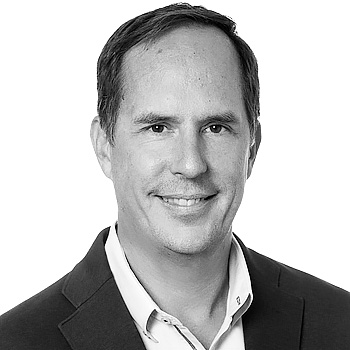
Michael Schroeder
Partner
When Fast Company selected SGA as one of the Most Innovative Companies in 2018, the publication identified the firm’s capabilities in Virtual Design and Construction (VDC) as a key differentiator in scheduling and cost certainty. Michael Schroeder, CCM played an instrumental role in attaining this honor: He has led the growth and development of the practice since 2014.
VDC is an ideal fit for Michael, who loves to discover and invent new technologies that enhance project outcomes. BIM underpins the programs he oversees, but he supplements the virtual world with face-to-face interactions to promote collaboration. At the beginning of every commission, he onboards the project team and hosts an Execution Success Planning session, during which participants determine the most effective methods of delivery. Other pillars of his methodology include co-location of the development, design, and construction partners; bespoke project dashboards; and a variety of teambuilding initiatives.
Before joining SGA, Michael served as president, CEO, and principal implementer at BIM Jet INC. in Boston for seven years. In this capacity, he led strategic consulting engagements for C-level BIM technology. Previously Michael held the role of director of design technology at Moshe Safdie and Associates in Somerville, MA, where he established the firm’s vision and future direction of BIM and other technology platforms.
Michael received a Master of Design Studies with distinction from Harvard University’s Graduate School of Design and a Bachelor of Architecture from Montana State University. He often lectures about BIM and integrated design at prominent industry organizations and institutions. In his spare time, Michael enjoys traveling with his wife and their four children.

Samuel Medina
Contributing Editor
Samuel Medina is a contributing editor of The Architect’s Newspaper. He was previously the executive editor of The Architect’s Newspaper, and before that the editorial director of Metropolis magazine. As a writer, his work has been published in art and architecture magazines such as Artforum, the Art Newspaper, and Domus, among others. He recently edited a monograph on the architect Eric Owen Moss, due out this year.
3:15 – 3:30 PM
3:30-4:30 PM
Join the team from Sasaki Strategies to discuss the opportunities and challenges of firm-wide R&D. Sasaki Strategies is an internal data analysis, computational design, and software development team within Sasaki.
On the surface, software development makes little sense within a professional services industry. Unlike the familiar billable-hour model, software development efforts can scale almost limitlessly: theoretically, an hour put into development can save time over and over again. However, in reality it takes time and overhead hours to centralize code and design for effective reuse.
Sasaki Strategies fills a niche between one-size-fits-all solutions and entirely bespoke work. A one-off effort may be targeted and high-impact enough that it brings sufficient value to a project. On the other hand, tools may be sufficiently scalable and repeatable that they make sense as external stand-alone products. Within this continuum of scalability there are many opportunities to adopt and adapt, developing and leveraging reusable platforms to fit the exact needs of a particular design opportunity. Our team engages with design teams deeply enough to understand the real issues and needs presented by projects, but briefly enough to be able to abstract and extract the opportunities for continued development. In this capacity, Sasaki Strategies connects multiple project teams around common solutions.
In this talk, Tamar Warburg (Sasaki’s Sustainability Director) will highlight how custom tools such as Carbon Conscience can help elevate design decisions; Scott Penman (Computation Design Lead) will discuss how innovation happens at the speed of project work; and Ken Goulding (Director of Sasaki Strategies) will talk about what it takes to lead a software innovation team within a design firm. We will share what we have learned about navigating the space between the very different worlds of software development and professional services and why it is critical for design-driven innovation to continue pursuing and testing ideas through a combination of hacked-together solutions and polished, high-quality user experiences.
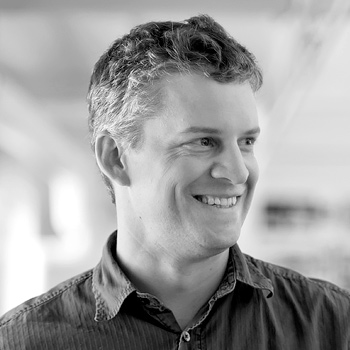
Ken Goulding
Director
Ken is a principal and serves as director of Sasaki Strategies—a team of analysts, statisticians, software developers, and planners seeking to bolster planning and design through creative technical solutions. Ken brings a designer’s eye to data visualization and strives to enhance comprehension of data and elevate communication of complex information. Ken uses technology to enhance workflow and support the decision-making process—providing stakeholders with immediate feedback and metrics on the impact of strategic decisions.
At the nexus of data, tools, and decision-making, Ken addresses the ever-present challenges of melding tension and opportunity. Ken has dedicated his career to finding the most pertinent applications of technology to planning and design, and he remains actively involved in inventing, prototyping, and building new tools and approaches. His collaborative spirit helps bridge the gap between designers, clients, and the Strategies group, while offering a unique perspective to the industry.
Ken holds a Bachelor of Architectural Studies from the University of Cape Town and a Master of City Planning from the Massachusetts Institute of Technology’s Department of Urban Studies and Planning.
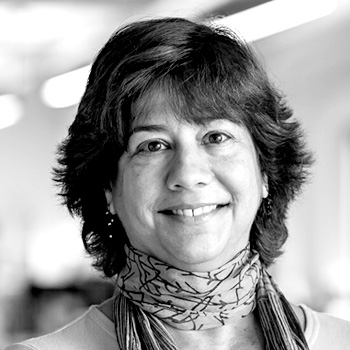
Tamar Warburg
Associate Principal Director of Sustainability and Resilience
Tamar Warburg AIA, LEED AP BD+C works with Sasaki teams to develop sustainability and resilience goals appropriate for each project and access critical resources to reach those goals. She enjoys collaborating to integrate sustainability considerations throughout the design process, from preliminary programming through construction management practices.
In this era of climate change, she believes that every project is an opportunity to make a healthy and resilient contribution to our clients, our communities, and our planet.
Tamar works across all Sasaki disciplines, on projects as varied as net-zero campus buildings, resilience and sustainability strategies for cities and corporate clients, and minimizing carbon emissions from buildings and landscape projects. She directs Sasaki’s Sustainable Leaders, training the individuals embedded in each project team responsible for project sustainability metrics and goals.
Tamar came to Sasaki with 25 years of experience designing educational and community buildings, both in the U.S. and with the Green Architecture Studio that she founded in Israel. She completed her M.Arch and BA at Harvard.
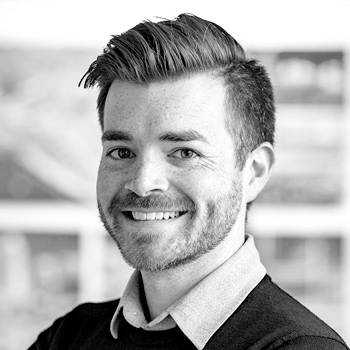
Scott Penman
Design Technologist
Penman is a multi-disciplinary designer and researcher interested in architecture, emerging technology, and computational models of human creativity. After training as an architect in Mississippi and working on nationally-recognized projects in Arkansas, Scott attended MIT to research artificial intelligence, drawing machines, and the playful attitudes exhibited during design. In his role as a Design Technologist with Sasaki Strategies, Scott works with data analysts, statisticians, and software developers to create computational tools that are tightly integrated into the firm’s creative workflows. Scott works with all of the firm’s disciplines to develop specific software solutions to design questions, leverage the potential of computational design, and empower designers to ask better questions.

Samuel Medina
Contributing Editor
Samuel Medina is a contributing editor of The Architect’s Newspaper. He was previously the executive editor of The Architect’s Newspaper, and before that the editorial director of Metropolis magazine. As a writer, his work has been published in art and architecture magazines such as Artforum, the Art Newspaper, and Domus, among others. He recently edited a monograph on the architect Eric Owen Moss, due out this year.
4:30 – 4:45 PM
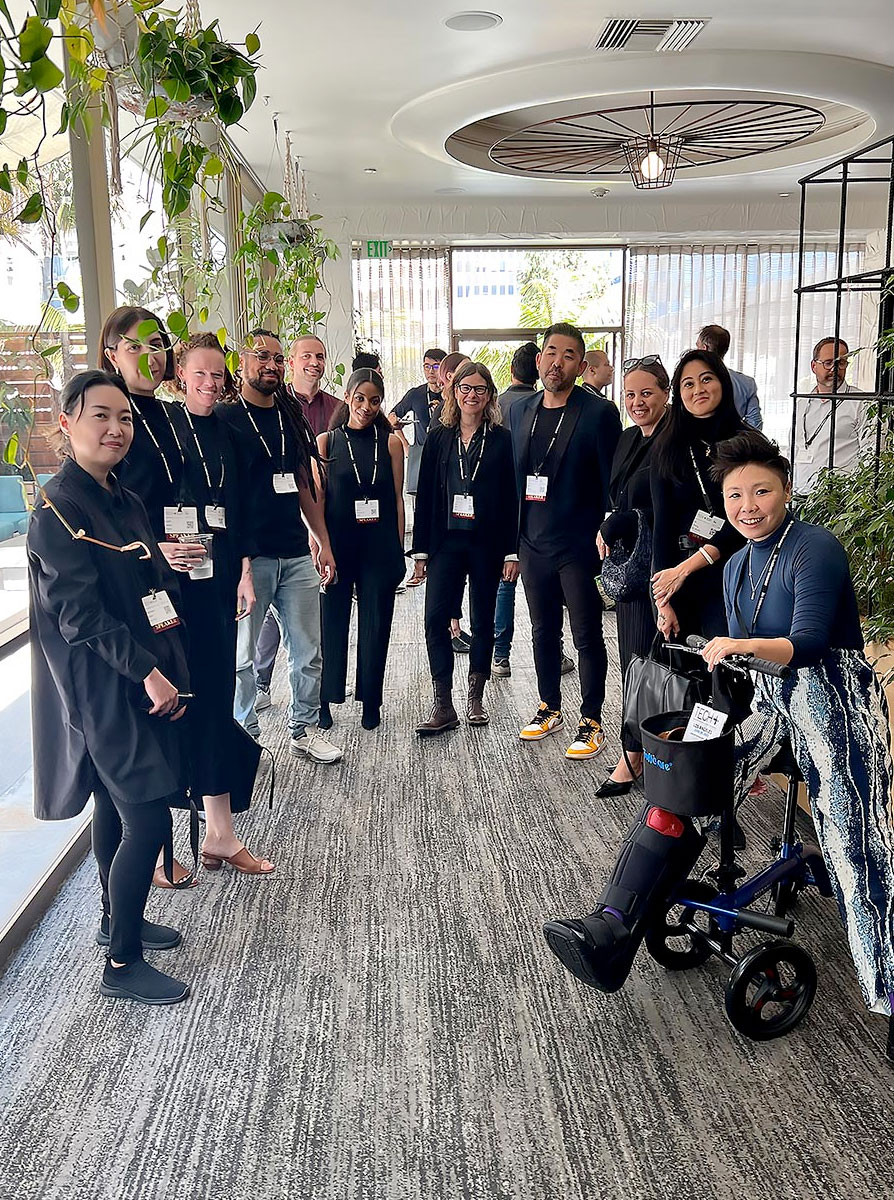
Save Your Seat Today!
Join us for peer-learning and networking opportunities
to keep you at the forefront of practice.
EARN 6 AIA LU CREDITS



